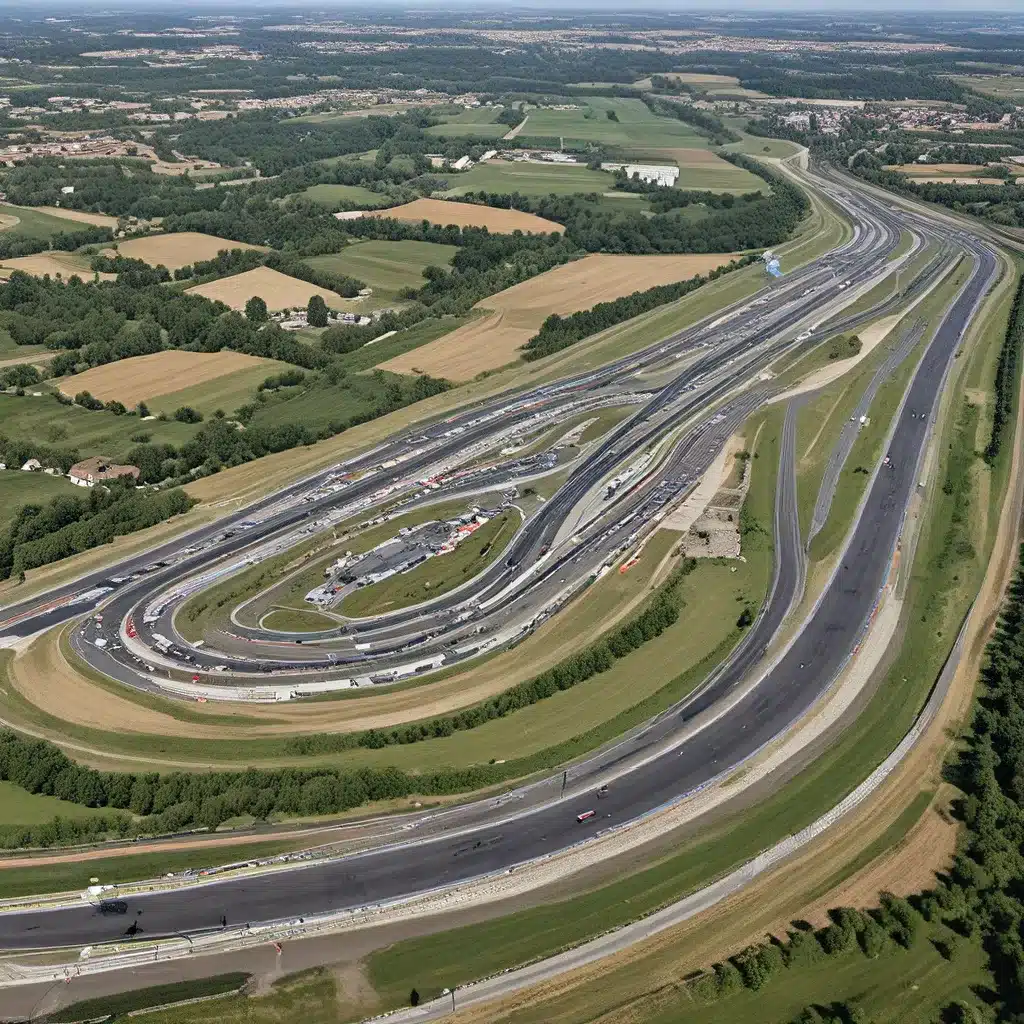
The Birthplace of French Motorsports
The Circuit de Nevers Magny-Cours, nestled in the heart of the French countryside, is a motorsports haven that has captured the imagination of racing enthusiasts worldwide. This iconic circuit, which has hosted some of the most prestigious events in the sport’s history, boasts a rich tapestry of stories and a legacy that continues to captivate both avid fans and casual spectators alike.
Situated in the Nièvre department of Burgundy, the Circuit de Nevers Magny-Cours emerged as a bastion of French motorsports in the late 20th century. Conceived as a replacement for the legendary Rouen-Les-Essarts circuit, which had fallen into disrepair, the Magny-Cours track was meticulously designed by renowned architect Hervé Picard to provide a thrilling and challenging experience for drivers and spectators alike.
The Circuit’s Unique Design
The Circuit de Nevers Magny-Cours stands out for its intricate and well-engineered layout, which has earned it widespread acclaim among racing enthusiasts. Spanning a total length of 4.411 kilometers, the circuit features 17 turns that test the skill and endurance of even the most seasoned drivers. The track’s undulating terrain, with its sharp elevation changes and long straightaways, creates a dynamic and unpredictable racing environment, where the slightest misstep can have profound consequences.
One of the circuit’s most distinctive features is the Estoril Corner, a challenging left-hand turn that has become a signature element of the Magny-Cours experience. This treacherous bend, named after the iconic Estoril circuit in Portugal, requires drivers to navigate a tight, off-camber section that has been the site of numerous dramatic moments throughout the circuit’s history.
Old Stadium Journey invites you to explore the rich tapestry of the Circuit de Nevers Magny-Cours and discover the stories that have unfolded on its hallowed tarmac.
The Rise of Magny-Cours
The Circuit de Nevers Magny-Cours first came to prominence in the late 1980s when it was selected to host the French Grand Prix, one of the most prestigious events on the Formula One calendar. The decision to move the race from the aging Dijon-Prenois circuit to the newly constructed Magny-Cours track was a strategic one, driven by the need to provide a modern, purpose-built facility that could accommodate the growing demands of the sport.
The inaugural French Grand Prix at Magny-Cours, held in 1991, was a resounding success, drawing a capacity crowd and captivating audiences around the world. The event was won by the legendary Ayrton Senna, who cemented his status as one of the greatest Formula One drivers of all time with a characteristic display of skill and determination.
Over the years, the Circuit de Nevers Magny-Cours has played host to a diverse array of motorsports events, from the prestigious 24 Hours of Le Mans endurance race to the World Touring Car Championship. The track’s versatility and attention to detail have earned it a reputation as one of the world’s premier racing venues, attracting the best drivers, teams, and manufacturers in the industry.
The Enduring Legacy of Magny-Cours
Despite its undeniable success, the Circuit de Nevers Magny-Cours has not been without its challenges. In the early 2000s, the track faced an uncertain future as Formula One’s governing body, the Fédération Internationale de l’Automobile (FIA), expressed concerns about the circuit’s infrastructure and facilities. This led to a period of intense scrutiny and speculation about the track’s long-term viability.
However, the Circuit de Nevers Magny-Cours proved its resilience by undergoing a comprehensive renovation and modernization effort that addressed the FIA’s concerns. The track’s owners, the Société d’Exploitation du Circuit de Nevers Magny-Cours (SECNMC), invested heavily in upgrading the circuit’s facilities, including the construction of a new pit complex and the installation of state-of-the-art safety features.
This commitment to continuous improvement has helped the Circuit de Nevers Magny-Cours maintain its status as a premier motorsports destination. The track has hosted the French Grand Prix until 2008, when the race was temporarily moved to other circuits, before returning to Magny-Cours in 2018 and 2019.
The Future of Magny-Cours
As the Circuit de Nevers Magny-Cours looks towards the future, it faces a range of challenges and opportunities. The ongoing evolution of motorsports technology, coupled with shifting consumer preferences and economic factors, has forced the circuit to adapt and innovate to remain relevant and competitive.
Some experts believe that the track may need to explore new avenues for revenue generation, such as hosting more diverse motorsports events or expanding its offerings to include non-racing activities. There is debate about the feasibility of attracting major international events like the Formula One World Championship on a more permanent basis, given the circuit’s relatively remote location and the growing demand for urban circuits that can provide a more immersive spectator experience.
Nonetheless, the Circuit de Nevers Magny-Cours remains a cherished and iconic motorsports destination, with a loyal following of passionate fans and a rich history that continues to captivate audiences worldwide. As ongoing research and development in the industry suggests, the circuit’s future may well depend on its ability to strike a delicate balance between preserving its heritage and embracing the evolving landscape of motorsports.
